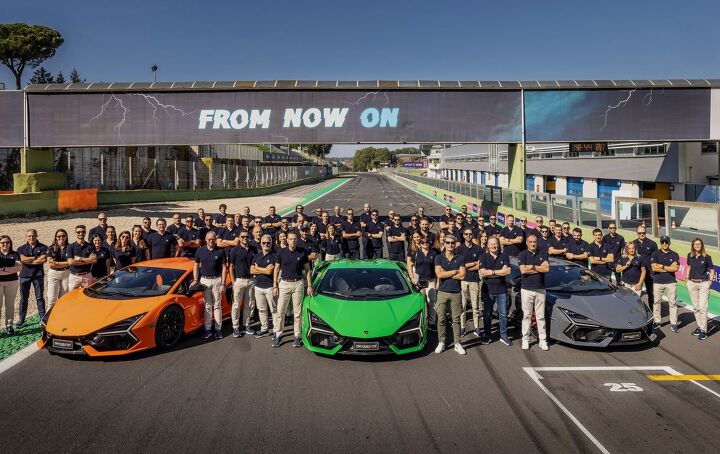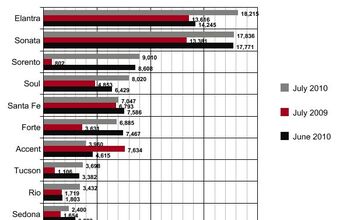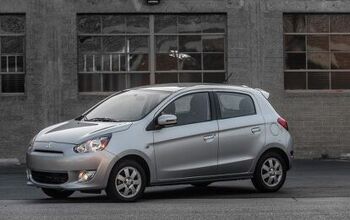Lamborghini Breaks Historic Sales Record

Lamborghini has broken its own sales record by delivering over 10,000 automobiles in 2023. While that’s still less than mainstream manufacturers are pushing out the door in a given week, it represents a major shift in how the brand does business and will likely open it up to additional regulatory scrutiny.
Sales were primarily driven by the Urus, with 6,087 vehicles delivered, and the Huracán, boasting 3,962 units. Analysts have suggested that something like this may not have been possible a decade ago. But with global wealth being transferred upward in recent years, Lamborghini was afforded an opportunity to draw in additional customers with its entry level products. Though, despite these being Lamborghini’s most affordable models, both the Huracán and Urus retail well above $200,000.
From Lamborghini:
The distribution of vehicles delivered was balanced in the three macro-regions, with EMEA showing a 14 [percent] increase over 2022 with a total of 3,987 cars, immediately followed by Americas with a 9 [percent] increase (Total: 3,465) and APAC up 4 [percent] (Total: 2,660). In detail, the United States continued as the top market with 3,000 cars delivered, followed by Germany (961), Chinese Mainland, Hong Kong and Macau (845), the United Kingdom (801), Japan (660), the Middle East (496), South Korea (434), Italy (409), Canada (357), Australia (263), France & Monaco (255), Switzerland (211), Taiwan (131) and India (103).
In terms of model split, the continuing success of the Urus Super SUV was confirmed (6,087 vehicles delivered), followed by another notable record for the Huracán, of which 3,962 cars were delivered. In addition, 63 cars equipped with the iconic V12 were delivered, including the last 12 Aventadors and 51 Few-Offs.
“It’s a true source of pride for the whole company to have surpassed the 10,000-car delivery mark. Playing a role in achieving this milestone for Lamborghini is an honor for me and for all the people who work tirelessly to achieve this goal,” stated Stephan Winkelmann, Chairman and CEO of Automobili Lamborghini. “This is a success made possible by the commitment of everyone, a major accomplishment based on true teamwork. But as always, we’re not stopping at single milestones, and we’re ready to take on more exciting new challenges in 2024.”
While the sales are good news for the brand, breaking the 10,000-unit barrier could come with some complications. The European Union had previously considered allowing specialty, low-volume manufacturers leeway when it comes to adhering to ever-tightening emissions rules. But it has started to move away from the scheme and is still planning to force all manufacturers to stop building everything but all-electric vehicles by 2035. While companies building fewer than 10,000 vehicles annually weren’t subject to the same emissions standards as the big boys, they’re still supposed to prepare for electrification if they want to continue doing business in Europe.
A subset of boutique manufacturers have attempted to convince the EU to rethink the plan by offering exemptions to low-volume brands on the grounds that their products aren’t transportation products but mobile works of rolling art. The premise is that they’re different from mainstream automobiles and should be treated as such.
“We create art pieces that exist for 100 years or more, so they’re not mass-production cars you throw away after 15 years,” Donkervoort Automobielen Managing Director Denis Donkervoort said early in 2023. “We know this because more than 99 [percent] of the cars we’ve ever built are still drivable, and we know this because we still service them.”
Donkervoort and a handful of other low-volume manufacturers are hoping to get around European regulations that would force them to halve CO2 emissions by 2030 and go fully electric by 2035. But they’re targeting an indefinite exemption for automakers building fewer than 1,000 vehicles per year, which wouldn’t pertain to Lamborghini even if it stopped selling the Urus tomorrow.
The theory here could be applied to companies like Lamborghini, however. Boutique brands have alleged that they produce vehicles in such small quantities that the overall carbon footprint is minuscule. Though the kind of people that buy those products are likely to have a much larger impact on the environment than your neighbor who drives an Honda CR-V and won’t need to heat a 10,000 square-foot mansion or fuel the private jet they also don’t own.
Regardless, Lamborghini now sells enough cars to put itself into a different category unless industry regulators are swayed by corporate lobbying efforts. But the Italian brand has fielded several all-electric concepts in recent years and has claimed 2024 will represent its first big push into transitioning its fleet to EVs, now that the time it allotted itself as a “celebration of the internal combustion engine” has concluded.
[Image: Lamborghini]
Become a TTAC insider. Get the latest news, features, TTAC takes, and everything else that gets to the truth about cars first by subscribing to our newsletter.

A staunch consumer advocate tracking industry trends and regulation. Before joining TTAC, Matt spent a decade working for marketing and research firms based in NYC. Clients included several of the world’s largest automakers, global tire brands, and aftermarket part suppliers. Dissatisfied with the corporate world and resentful of having to wear suits everyday, he pivoted to writing about cars. Since then, that man has become an ardent supporter of the right-to-repair movement, been interviewed on the auto industry by national radio broadcasts, driven more rental cars than anyone ever should, participated in amateur rallying events, and received the requisite minimum training as sanctioned by the SCCA. Handy with a wrench, Matt grew up surrounded by Detroit auto workers and managed to get a pizza delivery job before he was legally eligible. He later found himself driving box trucks through Manhattan, guaranteeing future sympathy for actual truckers. He continues to conduct research pertaining to the automotive sector as an independent contractor and has since moved back to his native Michigan, closer to where the cars are born. A contrarian, Matt claims to prefer understeer — stating that front and all-wheel drive vehicles cater best to his driving style.
More by Matt Posky
Latest Car Reviews
Read moreLatest Product Reviews
Read moreRecent Comments
- ChristianWimmer One of my clients is a company that is actually producing eFuels in Leipzig. Yes, they require a lot of energy to produce but this would not be an issue if Germany had nuclear energy or used the excess energy from wind and solar to produce these fuels. In such a scenario the energy losses wouldn’t really matter.Also, I am told that nations like Spain or the North African nations like Morocco or Tunisia could be ideal places to produce eFuels/Hydrogen due to their abundance of solar power. Again, the energy loses here would not matter since the energy used to produce these fuels is essentially “free”. If this path were pursued, Morocco and Tunisia could become wealthy nations and exporters of eFuels and Hydrogen. Countries with an abundance of solar or wind or hydro energy could be producing eFuels for their domestic consumption and export.Another argument which to me is irrelevant these days ist the poor thermal efficiency of ICE engines (25-35% gasoline, 40-45% diesel). One long trips with cruise control set to 130 km/h and even the occasional venture into the 180-200 km/h zone, my fully loaded (with my gear) A250 (2.0 4-cylinder 224-hp Turbo) can achieve an impressive gas mileage of 6 L / 100 km. That’s phenomenal - I am looking at six 1 liter bottles of water right now and that’s all my car needs to travel 100 km… amazing.So, I am a supporter of eFuels. I love internal combustion engines and if we want to use them in a climate neural way, then eFuels are a must. Also, to me every ICE car is way more sustainable and longer-lasting an an EV. Mazda, Toyota etc. are making the right move IMO.
- Blueice Once you infuse governmental unit regulation & [marketing] and taxpayerfunding, one knows quite well, dat the product or service isdestine to fail; which includes battery vehicles. Just axe yourself how revolutionary have your home batterydevices become ??? I am still waiting. after three decades, for a battery shaver whichonly requires charging two or three times per year.I am glad that I do not have a plug in Frau.
- Tassos Such a heavy breadvan on stilts, with so much HP, AND with ONLY 100 KWH Battery, I doubt if you will ever see 250 miles, let alone 300, under the best of conditions. In the winter, count on 150 miles range.And NO, it looks TERRIBLE. The only SUV that looks great is the RANGE ROVER.
- Tassos They sure are doing the right thing in the SHORT and MEDIUM term.As for the long term, in the long run, YOU'LL ALL BE DEAD, so WHO CARES.
- Tassos I wrote recommending a 20 year old CAMRY, beat up too. So the teen will not be too upset if it gets a few more dings.Somehow I cannot find my post, though.


































Comments
Join the conversation
You couldn't GIVE me one of those over-hyped over-priced Lambo-Goonies.
Tesla Model Y first EV to be Europe's No. 1 seller | Automotive News Europe (autonews.com)
Speaking of EPIC sales records by an automaker who was just an upstart joke, barely on the radar screen, 12 years ago.
Oh, and you can bet I am the REAL Tassos, not the coward identity thief punk vegetating around here.